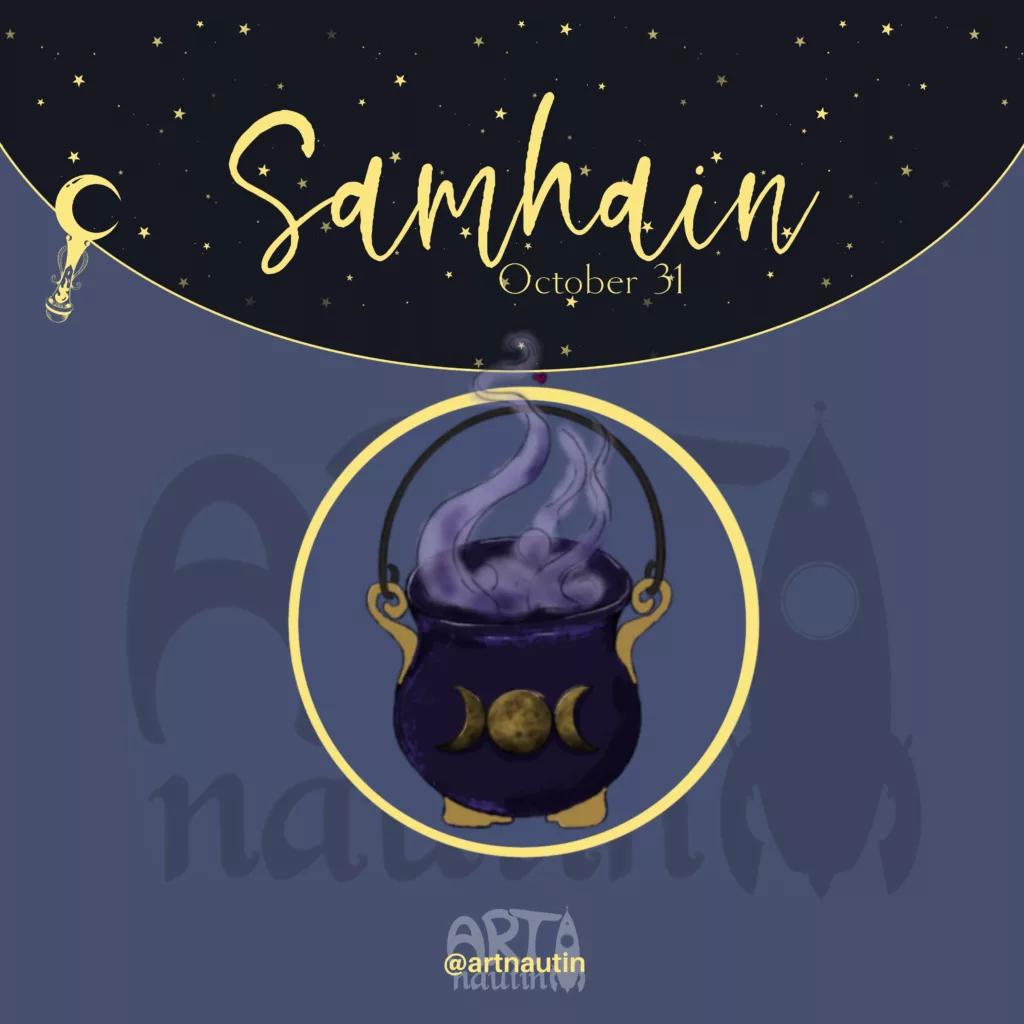
The Festival of Samhain, often considered the precursor to Halloween, is an ancient Celtic festival that marks the end of the harvest season and the beginning of winter. Celebrated on the night of October 31st to November 1st, it is one of the four major Celtic fire festivals. The Celts believed that during this time, the veil between the world of the living and the dead was at its thinnest, allowing spirits to walk among the living.
The Origins and Traditions of Samhain
Samhain has its roots in the ancient Celtic societies that lived in Ireland, Scotland, and the Isle of Man. It was a time of celebration when the harvest yields were assessed and preparations for winter were made. The Celts lit large bonfires and performed rituals to honor the gods and seek protection for the coming months. Traditionally, sacrifices were made to appease the gods.
Over the centuries, the customs of Samhain merged with Christian traditions, eventually leading to the creation of Halloween. Many of today’s Halloween traditions, such as dressing up in costumes and carving pumpkins, have their origins in ancient Samhain practices.
The Name and Pronunciation of Samhain
How to pronounce Samhain? The word “Samhain” comes from Old Irish, meaning “summer’s end.” It is pronounced “sow-in” in Irish Gaelic, reflecting its linguistic roots.
Celebrating Samhain in Modern Times
In contemporary times, the witchy festival Samhain is celebrated by many who wish to connect with ancient traditions and honor their ancestors. It is a time for reflection, divination, and community gatherings. Modern celebrations often include creating altars to remember and honor deceased loved ones, as well as participating in rituals that emphasize gratitude and connection to nature.
Rituals such as lighting candles, wearing costumes to ward off spirits, and sharing meals with loved ones are common. Many people engage in activities like tarot reading or rune casting to gain insights into the coming year, because Samhain is the beginning of the witch year. Meditation and guided visualizations are also popular for connecting with ancestors and receiving messages from them.
Symbolism of Samhain Festival
Samhain is rich with symbolism, much of which revolves around themes of transition, protection, and connection to the spiritual world. Common symbols include:
- Fire: Represents protection and the sun, used in traditional bonfires.
- Masks and Costumes: Used to disguise oneself from wandering spirits.
- Apples and Pomegranates: Symbols of fertility and life.
- Candles: Represent the light in the darkness, used for honoring ancestors.
- Autumn Leaves and Acorns: Symbolize the connection to the natural world and the harvest.
- Crystals like Obsidian: Offer protection and grounding.
8 Tips for Samhain Altar Decoration
- Use Natural Materials: Incorporate autumn leaves, acorns, and chestnuts to connect with nature and honor the harvest season.
- Candlelight: Place candles in black and orange to symbolize the transition from autumn to winter.
- Ancestor Photos: Display photos or mementos of your ancestors to honor and welcome their spirits.
- Include Crystals: Use crystals like obsidian or black tourmaline for protection and grounding.
- Samhain Symbols: Decorate with traditional Samhain symbols like apples or pomegranates, representing fertility and life.
- Herbs and Spices: Place dried herbs like sage or rosemary on the altar for cleansing and protection.
- Bowls of Water: These can symbolize the veil between worlds and help foster a deeper connection to spirits.
- Small Offerings: Offer small items like nuts, seeds, or bread to express gratitude to spirits and deities.
- Rosemary
- Wormwood
- Mugwort
- Benedict herb
- Sage
- Apples
- Pumpkins
- Cider
- Dark wine
- Pears
- Root vegetables
- (Black) Obsidian
- Black tourmaline
- Fluorite
- Carnelian
- Turquoise
- Labradorite
- Citrine
- Lapis lazuli
- Rhodonite
- Ametrine
- Haematite
- Botswana agate
- Smoky quartz
- Amber
- Pyrite
- Onyx
- Black
- Orange
- Vrown
- Yellow
- Violet
- Gold
- Silver
- Red
Creative light and love, Ramona
More about the Witch’s Wheel of the Year.
Get some magick for your inbox, with my monthly newsletter. <3
You do love magical art? Follow me on Instagram!
Check out my digital product “Grimoire Pages Samhain”
Would you like to celebrate Samhain powerfully and atmospherically without having to research for hours?
My Samhain PDF offers you everything you need – from detailed rituals to altar ideas to practical material lists. The materials are deliberately chosen so that you either already have them at home, can easily obtain them, or can find them at your trusted occult shop.
With step-by-step instructions for ancestor altars, DIY projects like scrying mirrors and pumpkin candles, as well as detailed correspondences for crystals, herbs, and symbols, your Samhain celebration will become an unforgettable experience. As a special extra, you’ll receive a guided meditation narrated by me, with which you can immediately immerse yourself in the Samhain energy.
Get the Samhain Grimoire Pages now and experience how simple and fulfilling your spiritual practice can be.

